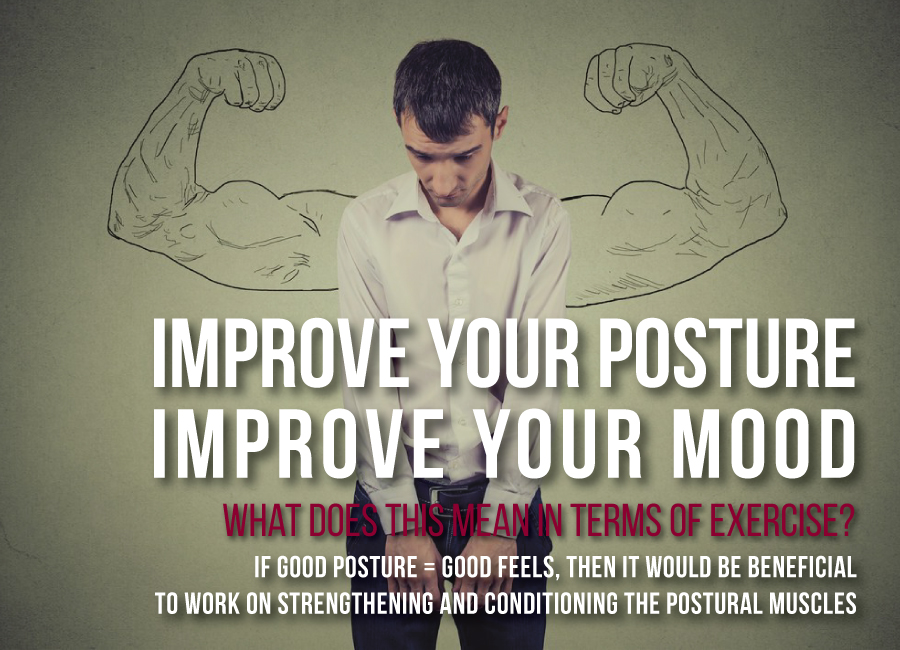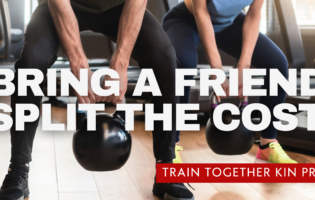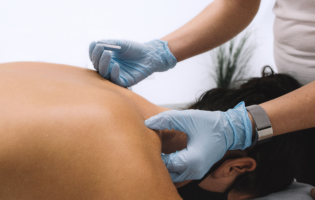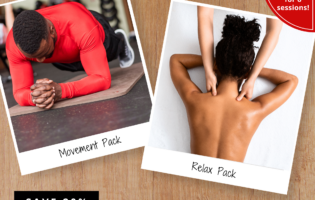Total Therapy Blog

Improve your posture, improve your mood
Well, it’s officially here. Winter has come. You know what this means: cozy sweaters, massive blankets, holiday love, and most commonly a huge drop in physical activity levels! Hey, I feel ya. Darkness comes a-knockin’ way too early in the evening and lingers for a little too long in the morning, making it difficult to throw off our comfy duvets and warm slippers to exercise between our daily life activities.
We in the northern hemisphere are well-aware of Seasonal Affective Disorder, or SAD. If you don’t know it by name, then you probably know it by symptoms. The drawn-out hours of dark and dreary weather saps our bodies of energy (both physically and mentally), which can make us feel like we’re being pulled down into a funk. Treatment ranges from psychotherapy to exposure to a specialized light, but regulated exercise also has a powerful, positive impact to help combat the winter blues. You can check out my previous blog here for how exercise physiologically affects mental wellness overall.
Many studies have gone out to seek the effects of posture on mental health, using parameters such as: mood, positivity, memory recall, and depression and anxiety disorders. There’s good evidence that upright posture positively influences our mental wellness, at the very least temporarily.
This article on the “power posture” gained a lot of attention and even received its own TED talks. The power posture (also described as the “high pose” in the study) is defined as an expansive posture with open limbs. Participants from the study held the high pose for a mere 2 minutes and reported increased positivity (i.e. perception of feeling powerful and ready to take risks), while physiologically their cortisol (stress hormone) levels decreased. Good posture isn’t just to make your mama happy at the dinner table!
What does this mean in terms of exercise? If good posture = good feels, then it would be beneficial to work on strengthening and conditioning the postural muscles.
Feel-good exercises Part 1:
Improve your posture, improve your mood
(Too long, did not read? Click here to get to the super short summary.)
As you will see quickly, these movements are quite simple; if you already have a workout, these exercises will not be a replacement. Rather, these mini exercises will bring awareness both mentally and neurally to the correct muscles so that keeping good posture becomes second nature. Try these before a regular workout or before your daily activities so you set your posture up for the day!
- Don’t be Cruella to your neck.
 When the deep neck muscles aren’t pulling their own weight, the bigger and more superficial muscles take over… and they are NOT happy about it! The bigger muscles are meant more for movement, not for stabilizing. They’re ill-equipped to hold your head up all day; when they do, they end up pulling things into different places. This results in a hunched, forward-rounded posture… The complete opposite of the high pose!
When the deep neck muscles aren’t pulling their own weight, the bigger and more superficial muscles take over… and they are NOT happy about it! The bigger muscles are meant more for movement, not for stabilizing. They’re ill-equipped to hold your head up all day; when they do, they end up pulling things into different places. This results in a hunched, forward-rounded posture… The complete opposite of the high pose!
To strengthen your deep neck muscles, try the “chin tuck”, or neck retraction. It’s a simple and very attractive exercise that essentially gives you a double chin– a bit of a hot topic when I tell patients they can/should do it anywhere, from their office desk to in bed.

Common errors include dropping the chin towards the chest (which is flexion and not retraction, no matter how many chins you achieve) or conversely drawing the chin up (which creates quite an uncomfortable angle in the back of the neck). Keep your eyes gazing ahead at all times and hold for 3 to 5 seconds without discomfort or pain.
- The only hunchback in your house ought to be the Disney version
I love that movie and its loveable misfit protagonist, but my mom took that opportunity to tell 7 year-old me that lazy posture will leave me looking like Quasimodo. The lesson stuck.
So, we have the mid and lower trapezius (upper trapezius are not invited to the party). They prevent the hunched look by keeping the scapulae (shoulder blades) from elevating and protracting, or flaring outwards. Rhomboids also work with the traps to secure the scapulae from protracting. When one or more of these muscles are weak, we get a real genuine Quasimodo-look.
Step one: Stand up straight with a slight chin tuck. Might as well stand in the posture you’re aiming to increase endurance for! Have your elbows bent at 90* with your hands out in front of you, palms up.
Step two: Retract/squeeze your scapulae together, as if to stick your chest out (but do not hyperextend at the back to do so!).
Step three: Maintaining the retraction and keeping both elbows tucked by your side, turn your hands. Theraband optional! Hold 3 to 5 seconds.
Common mistakes include losing the chin tuck (result: pecking forward like a pigeon) and elevating the shoulders at the same time as retracting (you’ll feel it in your upper back/base of neck).

It’s also worth stretching your pecs (chest muscles), especially if you know you already have rounded shoulders. The pecs are a big, powerful muscle that, when overly activated, pulls the shoulders forward.
- Lace up your inner corset
No, I don’t mean you should cinch yourself up to alarming levels in order to achieve a crazy hourglass figure. Asphyxiation in the name of silly fashion is SO mid-1800’s! We’re talking about the core– specifically, the transverse abdominis (TA), the deepest muscles in the abdominal area. Its purpose is to compress and support the abdominal cavity, helping you keep a tall, erect posture whether you are standing or sitting.
This is an exercise to strengthen the nerve pathway between your brain and the TA.

Step one: Find the top of your pelvis (hip bones) with your thumbs. Follow this ridge diagonally inwards until your thumbs are resting off the bone. This is the easiest place for you to feel the TA. Go ahead and cough a couple times; you should feel something under there tighten up and harden. Tada! You found it!
Step two: Try mimicking that muscle activation with intention now. Bear down into your abdominal area, like you’re bracing yourself against a physical force… Or as if you’re having a bowel movement. (Let’s be honest, this explanation is the easiest to relate to.)
Step three: If you got it, great! Can you sustain contraction without letting the TA flicker on and off? For 30 seconds? If yes, go forth with your regular activity but check in with the TA from time to time to make sure it isn’t slacking off.
If you didn’t immediately get it, no worries. You already completed step one so we know you have the muscle! Keep practicing. Another tip: try forcefully exhaling through pursed lips.
If you did get it without any undue fatigue or pain, try a knee-to-full plank to coordinate the TA with the rest of the abdominal muscles. (It’s also another great opportunity to work on your chin tucks!)

In summation… Super short, as promised:
- Chin tuck, to improve neck posture and strength
- Pull-aparts, to combat slouched shoulders
- TA awareness, to pull yourself up straight
Strengthen your postural muscles, keep a good posture, and greet the new year with confidence and positivity!
– Mae Nakano, BSc Kinesiology








Follow Us!
& Stay Up To Date
BLOG